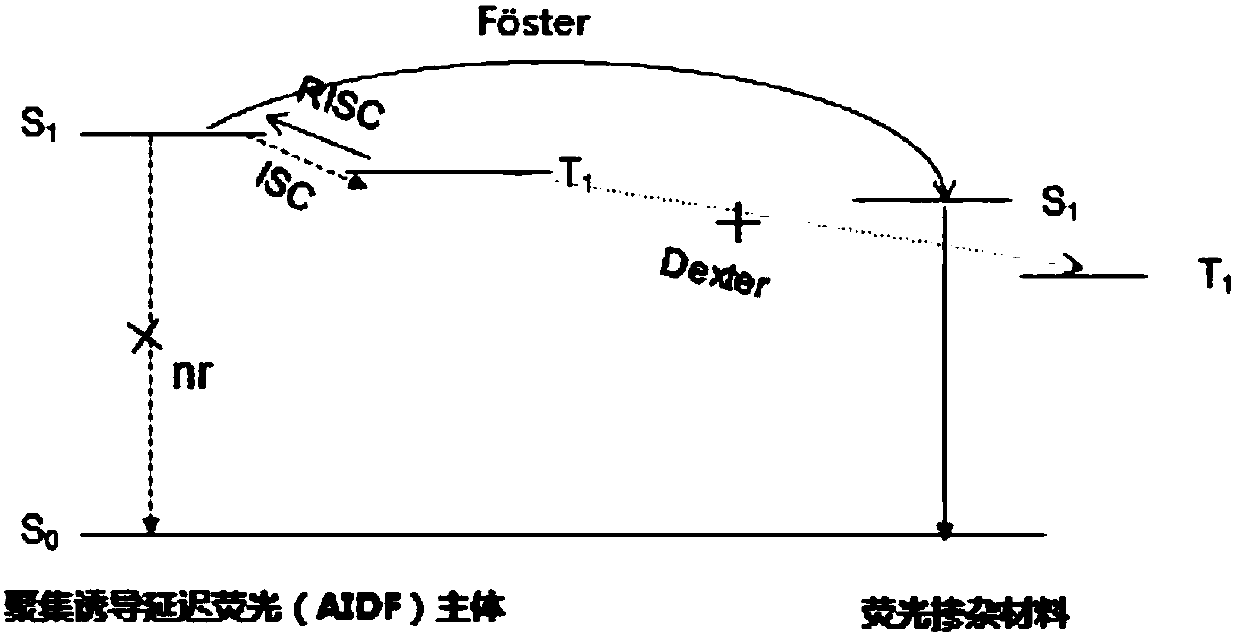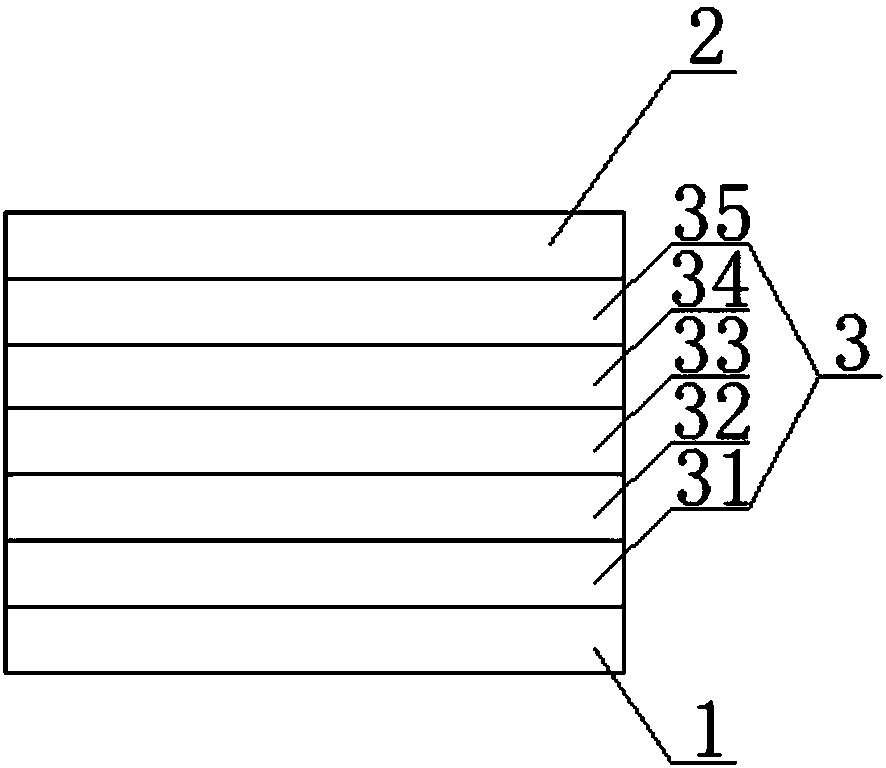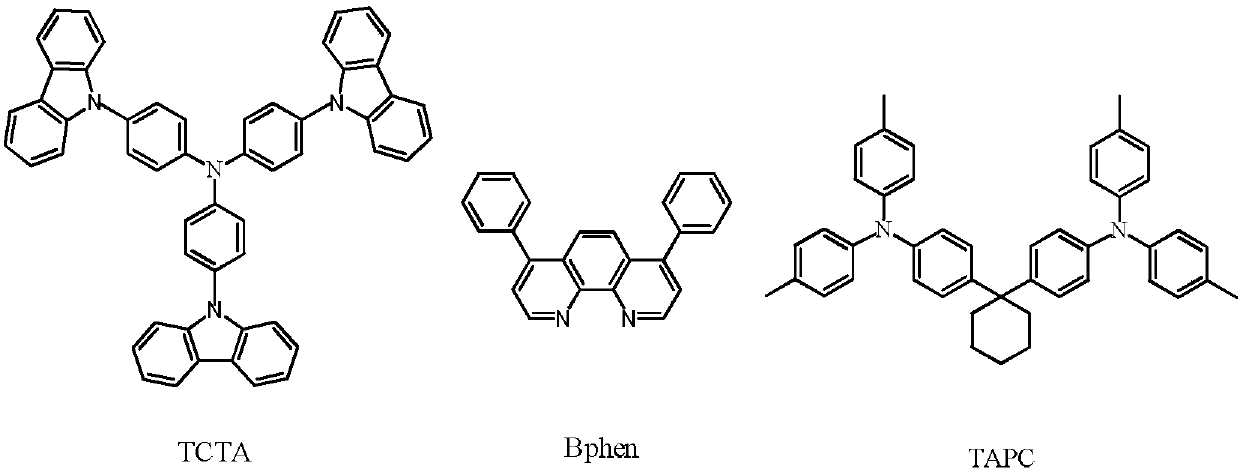Organic light-emitting device
An electroluminescent device and electroluminescent technology, applied in the direction of electric solid devices, electrical components, semiconductor devices, etc., can solve the problems of efficiency quenching, low efficiency of fluorescent electroluminescent devices, etc., so as to reduce the roll-off of device efficiency and improve the Exciton utilization, reducing triplet-triplet annihilation effect
- Summary
- Abstract
- Description
- Claims
- Application Information
AI Technical Summary
Problems solved by technology
Method used
Image
Examples
Embodiment 1
[0055] This embodiment provides an organic electroluminescent device, such as figure 2 As shown, there are a first electrode 1 , a second electrode 2 and an organic functional layer 3 between the first electrode 1 and the second electrode 2 . The first electrode 1 is an anode, the second electrode 2 is a cathode, and the organic functional layer 3 includes a hole transport layer 31, an electron blocking layer 32, a light emitting layer 33, an electron transport layer 34, and an electron injection layer 35 that are stacked. The structure of the electroluminescent device is: anode / hole transport layer / hole blocking layer / light emitting layer / electron transport layer / electron injection layer / cathode.
[0056] The light emitting layer 33 is composed of a host material and a dopant material doped in the host material. The host material includes an aggregation-induced delayed fluorescent material, and the doping material is a fluorescent doping dye. Among them, the molecular skel...
Embodiment 2
[0080] The difference between this example and Example 1 lies in that the molecules of the aggregation-induced delayed fluorescent material have the structure shown in formula (A-31), and the fluorescent dopant material is a (blue) fluorescent dopant material (F-22). Wherein, the doping concentration of the blue fluorescent dopant material (F-22) is 10wt%. Device at 5000cd / m 2 Under brightness, the external quantum efficiency is 11.5%.
Embodiment 3
[0082] The difference between this example and Example 1 lies in that the molecules of the aggregation-induced delay fluorescent material have the structure shown in formula (A-3), and the fluorescent dopant material is a green fluorescent dopant material (F-12). Wherein, the doping concentration of the green fluorescent doping material (F-12) is 30wt%. Device at 5000cd / m 2 Under brightness, the external quantum efficiency is 17.1%.
PUM
 Login to View More
Login to View More Abstract
Description
Claims
Application Information
 Login to View More
Login to View More - R&D
- Intellectual Property
- Life Sciences
- Materials
- Tech Scout
- Unparalleled Data Quality
- Higher Quality Content
- 60% Fewer Hallucinations
Browse by: Latest US Patents, China's latest patents, Technical Efficacy Thesaurus, Application Domain, Technology Topic, Popular Technical Reports.
© 2025 PatSnap. All rights reserved.Legal|Privacy policy|Modern Slavery Act Transparency Statement|Sitemap|About US| Contact US: help@patsnap.com



